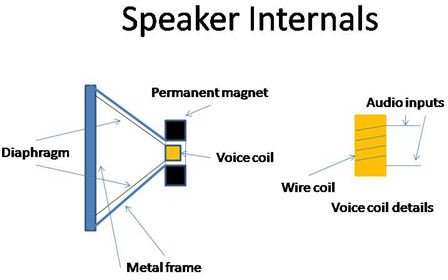How do Speakers Work? The Basics of Sound Production & Technology
Introduction
Although there are many different types of speakers that are available today, the basic principles of sound production are pretty much the same across most of the speakers. A hi-fi system speaker isn’t all that much different from a car audio system speaker, or a pair of computer speakers. The difference may be that different speaker systems have decided to channel different parts of the audio frequency range into different speaker types (more about this later). The same is true of multiple-channel stereo speaker systems such as Dolby 5.1, there are a number of speakers, each with a designated frequency range, but all of the speakers have the same basic principle of operation.
There are of course many other types of speakers that are available and in use. An example would be speakers that are used for sonar, which are magneto-restrictive speakers. But for the most part, the next speaker that you will most likely buy, or the speaker that is on the desk next to you are probably speakers of the type that concern us. These are called electro-acoustic speakers because they convert an electrical signal into a sound or acoustic wave.
How do speakers work?
Some of the details (especially of construction) can vary from speaker to speaker, but there are three critical pieces to the sound creation process and these are: the speaker cone or diaphragm, the coil and a powerful magnet. The construction of a speaker using these three simple parts is shown in the figure below.
**
Looking at each part and what it does will help us understand how a speaker works.
Magnet
A powerful magnet is a static part of the speaker’s construction. It remains in place and at all times produces a strong magnetic field around it.
Coil or Voice Coil
The two ends of the coil are attached to the audio player (which could be a hi-fi system, a car audio system or the connection to the audio port of the computer). This coil functions like an electromagnet. As an electric current passes through the coil, this causes the coil to move in the magnetic field of the permanent magnet sitting around it.
Speaker Cone or Diaphragm
The cone is made of a thin material and is attached to the coil. As the coil moves back and forth, so does the cone. This vibrating movement of the cone is what produces sound waves, as the air in front of the cone is moved. The frequency of this cone movement determines the frequency of the sound produced.
This basic construction is called a driver. There are of course other pieces such as the frame in which the speaker is housed, a cloth spider which holds the cone in place, etc. but think of these as playing a supporting role in the production of sound. However, one critical piece bears mentioning.
Cross-over circuit
This is an electronic circuit that channels different audio frequency ranges to different speaker/driver types.
Types of Speakers
There are full-range speakers that produce sound in almost the entire audible range, but for better sound quality, higher-end speaker systems tend to separate the different parts of the audible frequency range (done by the cross-over circuit) and use different drivers for each:
High Frequency Drivers
These are also called Tweeters and are used to produce the highest frequency sounds. They are smaller in size.
Low-Frequency Drivers
Also called Woofers, they are used to produce the heavy low frequency, bass sounds. They are bigger in size.
Mid-Range Frequency Drivers
These are used to reproduce the vocal range and are the ones heard most comfortably by the human ear. Their size is smaller than a woofer and larger than a tweeter.
